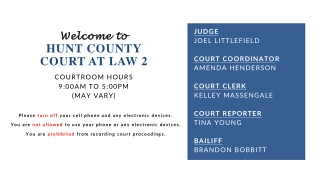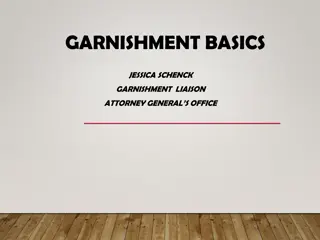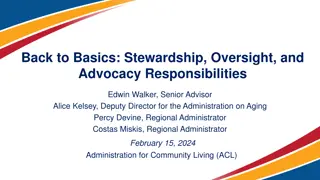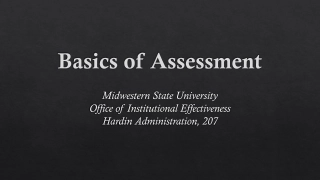Understanding Juries: The Basics and Jury Selection Process
Juries are an essential part of the legal system, offering defendants the right to a trial by an impartial jury. This right applies in criminal prosecutions where the accused faces at least six months in prison. Juries must consist of impartial community members, with verdicts requiring unanimity. The jury selection process involves summoning a pool of jurors, questioning them, and selecting the final jury to hear the case.
Download Presentation
Please find below an Image/Link to download the presentation.
The content on the website is provided AS IS for your information and personal use only. It may not be sold, licensed, or shared on other websites without obtaining consent from the author. Download presentation by click this link. If you encounter any issues during the download, it is possible that the publisher has removed the file from their server.
Presentation Transcript
Model Lesson Plan Jury Duty and Selection
Juries: The Basics You have a constitutional right to a jury trial! The 6th Amendment says In all criminal prosecutions, the accused shall enjoy the right to a trial, by an impartial jury of the State and district wherein the crime shall have been committed .
So you have a right When does it apply? Rule: Absent extraordinary circumstances, a criminal defendant is entitled to a jury trial when they face at least six months in prison for any one charge against them.
Jury Mechanics Number of jurors: Juries must be made up of at least six members, though the traditional number is twelve. Verdicts: Must be unanimous to either convict or acquit the defendant. Otherwise, the jury is hung, and the court is likely to declare a mistrial. Who: Jurors should be impartial members of the community in which the crime was allegedly committed.
Jury Duty in Washington Jury pool: - Name is selected randomly from voter registration and driver s license records Answers to the juror questionnaire are evaluated to ensure suitability for jury service Now you re part of the Jury pool - - Eligibility: - To be eligible for jury service, you must be at least 18 years of age, a citizen of the United States, a resident of the county in which you are to serve as a juror, and you must be able to communicate in English. If you have ever been convicted of a felony, you must have had your civil rights restored.
Jury Selection: How does it work? Four-step process: 1. A pool of jurors, the jury venire, are summoned to court 2. Prosecution and defense counsel question potential jurors through voir dire 3. Both sides exercise their for-cause challenges and peremptory challenges 4. The final petit jury, which will hear the case, is selected
The Venire The jury pool, or venire, from which the final jury is selected must represent a fair cross section of the community. The venire doesn t have to be exactly proportional to the community, it just needs to be reasonably representative of it. So, it is unconstitutional for the state to systematically excluding distinctive groups in the community from jury service. However, some cognizable groups, like felons, can be excluded from jury venires if there s a compelling reason to exclude them.
Voir Dire This is the part where the lawyers (and usually the court) ask the prospective jurors questions, to make sure they re ready to serve on the jury. It s time limited! So what are some realistic goals for voir dire? - ID odd ducks. You want your jury to work as a team, so you want to avoid people who won t work with the group and might cause a hung jury. Learn who is hostile to your case, your client, or even you. Build rapport with the potential jurors (it s the only part of the trial where you get to talk to them). Educate the jury about the process and your case - - -
Fairytale Set of Facts for Sample Voir Dire A little girl named Goldilocks, goes for a walk in the forest and comes upon a house where she enters and finds to her delight three bowls of porridge. The first one she tastes is too salty, the next too sweet, but the third one just right so she eats it all up. Goldilocks finds the three different size chairs where she tries them out and finds the first one too high, the next too low, and then the little one just right but it breaks when she sits in it. As she wanders in the home she finds three beds and tries them out. The first bed is too hard, the next too soft but the third is just right and she curls up and falls asleep. Meanwhile the owners come home who happen to be three bears, Papa, Momma, and little Baby Bear. Much to their surprise they discover the outcome of what Goldilocks has done to their porridge, chairs and finally their beds. Goldilocks wakes with a fright when she sees and hears the bears; she jumps from the bed and runs away as fast as she can. Goldilocks was subsequently charged with breaking and entering. Goldilocks claims that when the bears startled her awake, one of them hit her and gave her a concussion.
Voir Dire Roleplay Instructions I need one volunteer to serve as the attorney who actually conducts voir dire (a speaking role), and an additional 2-3 students to help the attorney prepare their voir dire. Those of you not serving as attorneys will play the potential jurors. I will hand each of you a character card. The card will have a number on it that is is your juror number, and how the student attorney will call on you during voir dire. The card also has a short bio for your character you should act in accordance with this bio, answer questions as your character would, and have fun filling in the gaps! I will work with student attorneys to prepare their voir dire while the rest of you focus on your characters.
State v. Haines There s been a shooting, and now Jordan Davis is dead. He was killed by Pat Haines, a man who had hired Jordan to do some carpentry work in his house. The two did not get along, and there is some reason to believe Pat killed Jordan intentionally that he murdered him, in other words. Pat, on the other hand, maintains his innocence. He says he shot Jordan in self-defense, that after hearing about the large knife Jordan carried on him at work, Pat was scared Jordan would use it on him. Even though Jordan didn t have the knife on him when he confronted Pat, he did have his knife belt and work smock on over it, such that it could appear he was armed to a casual observer. The whole confrontation started when Pat accused Jordan of stealing from him, and docked his pay for the carpentry work in response. Jordan denied having stolen anything, and went to Pat s house to confront him after a telephone call. That s when the shooting occurred right outside Pat s house. Pat s been charged with second degree murder. Now, it s time to select a jury
















































